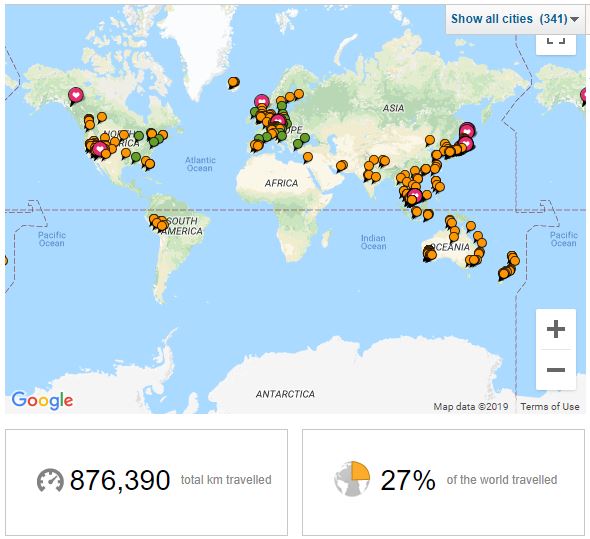|
Barossa Valley. Drove up from Adelaide this morning.
Dry, golden hills rolling by. Arrived in Tanunda. Walked the rows of gnarled old shiraz vines. Plump grapes hanging heavy, waiting for harvest. The earth smelled of sunbaked clay. Met the winemaker in the cellar door. Tasted a flight of his reds. Flavors of blackberry, pepper, leather. Bought a few bottles. Nightcap on the cottage porch. Stars bright above the inky hills. The hush of a place in tune with the land's rhythms. Simplicity. Honesty. Beauty in the everyday. That's the Barossa.
0 Comments
I went to Kangaroo Island.
Off Australia's south coast. Took the ferry from Cape Jervis. Drove my car onboard. Cliffs and beaches. Eucalyptus and she-oaks. Koalas dozing in trees. Seals basking on rocks. Kangaroos, of course. Mobs of them. Bounding across fields. Silhouettes at dusk. Emus too. Big birds. Flightless. Stayed in a cabin. Rustic. Quiet. Hiked the trails. Rugged beauty. Unspoiled. Kangaroo Island. Raw nature. Solitude. I breathed it in. Let the wildness restore me. Until the ferry took me back. The rain fell steadily as I walked along the beach at Etretat.
Gray clouds hung low and heavy. Waves crashed against the cliffs in the distance. I pulled my coat tighter. A gull cried overhead, circling, searching. The air smelled of salt and damp earth. Rivulets ran down the sand into the sea. The famous arches were shrouded in mist. I was alone with my thoughts. Memories mingled with the rain. Life can be hard. We seek shelter where we can. On days like this, there is still a stark beauty to be found in the gloom. If we look for it. Woke up late.
Hair's a mess, sticking out every which way. Stumbled to the bathroom mirror. Stared at my reflection in this cramped Rouen apartment. Ran my fingers through the tangles, but they wouldn't cooperate. Oh well. C'est la vie. Some days are like that. Might as well embrace the chaos. Snapped a quick selfie, messy locks and all. Just another morning, another story. I walked near Le Jardin d'Eau.
The famous water gardens in Giverny. That inspired Monet's paintings. His luminous water lilies and tranquil ponds. I saw the Japanese bridge he built. And stood before the weeping willows. The wisteria and bamboo. That he planted with care. In this garden sanctuary. Where light dances on water. And Monet's vision comes alive. I stand before Monet's grave.
The day is cold, the sky gray. Giverny's church in the near distance. His years of color, now faded. Impressions of a life fully lived. Resting in the earth he once painted. An artist's eternal palette. I wandered into Nagoro, the most remote village in Japan.
Silence hung heavy in the air, a haunting stillness. Scarecrows outnumbered humans, 300 to 30. Lifeless figures posed in eternal moments. Each straw soul a memory of someone long gone. In this village, only ghosts and dolls remain. I walked up the stone steps.
Chikurinji Temple stood before me. Kōchi, on the island of Shikoku. Number 31 of 88 temples on the pilgrimage. Founded by Gyōki, a Buddhist priest, in the 8th century. I passed through the temple gate. Paid respects to Monju Bosatsu, bodhisattva of wisdom. The main hall held a hidden treasure. A statue of Monju, riding a lion. Flanked by attendants, one male, one female. I felt a deep sense of history. And serenity in this sacred place. I stand on the rocky shore.
Waves crash against the cliffs. The sea stretches endlessly. Gulls wheel overhead, crying. Fishing boats bob in the distance. A lighthouse perches, steadfast. The salty breeze fills my lungs. I am small in this vast beauty. Nature's power humbles me. I find peace in the solitude. I drove to the Jogu Submersible Bridge.
It was early morning. The sun hung low, casting long shadows I parked and walked out onto the bridge Water lapped gently at the concrete Twice a day, the bridge sinks beneath the surface Allowing boats to pass A marvel of engineering Connecting two pieces of land Giving way to the ebb and flow I stood there for a while Thinking about the balance of things How we build and adapt Find ways to cross divides The bridge seemed to understand this I watched it disappear, water rising Merging the sea and sky into blue. |
Places I Have Been ToCategories
All
Archives
August 2022
|


 RSS Feed
RSS Feed